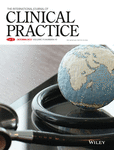Frequency, signs and symptoms, and criteria adopted for long COVID-19: A systematic review
PROSPERO: CRD42020214587
Funding information
This study was supported by Sociedade Beneficente de Senhoras Hospital Sírio-Libanês.
Abstract
Aims
To identify, systematically evaluate and summarise the best available evidence on the frequency of long COVID-19 (post-acute COVID-19 syndrome), its clinical manifestations, and the criteria used for diagnosis.
Methods
Systematic review conducted with a comprehensive search including formal databases, COVID-19 or SARS-CoV-2 data sources, grey literature, and manual search. We considered for inclusion clinical trials, observational longitudinal comparative and non-comparative studies, cross-sectional, before-and-after, and case series. We assessed the methodological quality by specific tools based on the study designs. We presented the results as a narrative synthesis regarding the frequency and duration of long COVID-19, signs and symptoms, criteria used for diagnosis, and potential risk factors.
Results
We included 25 observational studies with moderate to high methodological quality, considering 5440 participants. The frequency of long COVID-19 ranged from 4.7% to 80%, and the most prevalent signs/symptoms were chest pain (up to 89%), fatigue (up to 65%), dyspnea (up to 61%), and cough and sputum production (up to 59%). Temporal criteria used to define long COVID-19 varied from 3 to 24 weeks after acute phase or hospital discharge. Potentially associated risk factors were old age, female sex, severe clinical status, a high number of comorbidities, hospital admission, and oxygen supplementation at the acute phase. However, limitations related to study designs added uncertainty to this finding. None of the studies assessed the duration of signs/symptoms.
Conclusion
The frequency of long COVID-19 reached up to 80% over the studies included and occurred between 3 and 24 weeks after acute phase or hospital discharge. Chest pain, fatigue, dyspnea, and cough were the most reported clinical manifestations attributed to the condition. Based on these systematic review findings, there is an urgent need to understand this emerging, complex and challenging medical condition. Proposals for diagnostic criteria and standard terminology are welcome.
DISCLOSURES
The authors declare no competing interests.




